The real dolphin tale: They’re smart, sometimes vicious and highly sexed
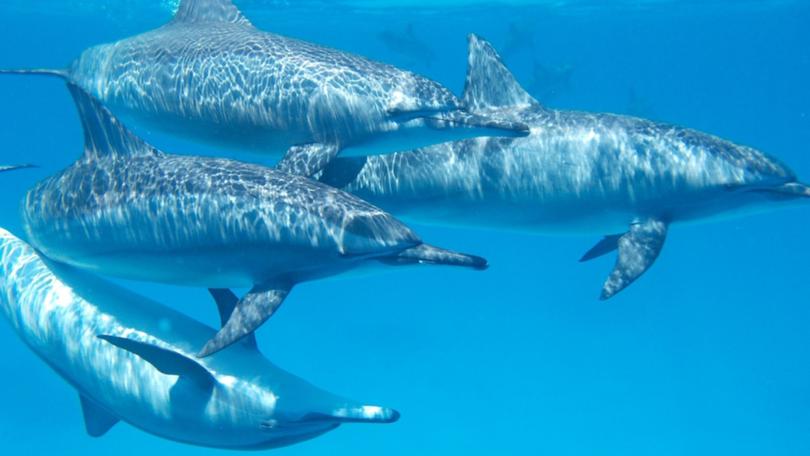
SARASOTA, Fla. - The research vessel Martha Jane glided slowly across the teal waters of Sarasota Bay on Florida’s Gulf Coast under a cloudless sky tailor-made for tourists on a recent day.
“There’s 2094!” one of the scientists on the boat called out. “She’s still with us!”
The bottlenose dolphin known to researchers as 2094 had poked her dorsal fin out of the water for only a few seconds, but that was enough to identify her as a young female that had been the focus of a dramatic rescue from a fishing line a year ago.
Sign up to The Nightly's newsletters.
Get the first look at the digital newspaper, curated daily stories and breaking headlines delivered to your inbox.
By continuing you agree to our Terms and Privacy Policy.No. 2094 is one of thousands of dolphins registered in the Sarasota Dolphin Research Program’s database, each individual identified by the nicks and notches on their dorsal — or back — fins.
The world’s longest-running study of a wild dolphin population, the Sarasota effort has sighted and recorded more than 5750 dolphins and made the shallow waters of Sarasota Bay a living laboratory for 53 years.
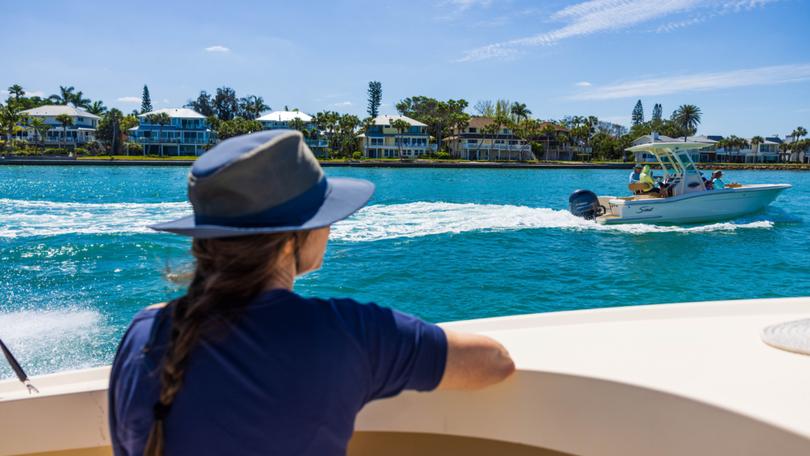
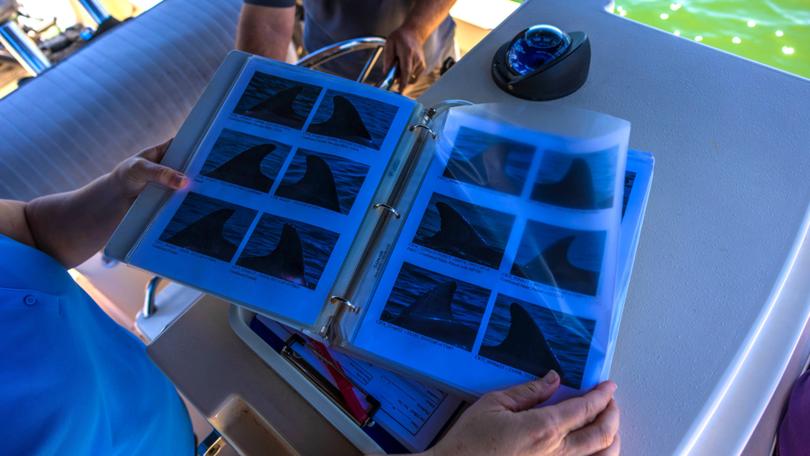
Among the program’s key findings: The individual dolphins here live in specific “neighbourhoods” generation after generation, forming a mosaic of adjacent communities along Florida’s west coast. Many males forge buddy pairs for protection and stay together for life. And hetero- and same-sex interactions are used to establish and maintain social bonds over dolphin life spans that can stretch well past the age of 60.
Not ‘humans in wet suits’
In 1970, when the Sarasota Dolphin Research Program launched, dolphins were the subject of numerous romantic myths, including that they were intelligent and kind — animals that could be friends and even movie stars.
People viewed them as “humans in wet suits,” said Randy Wells, the director of the program, which is administered by the Brookfield Zoo Chicago.
But research has shown that, while they are highly intelligent, they have sensory systems very different from those of humans and a complex and unique means of communication.
Listening stations the program installed around Sarasota Bay have recorded thousands of hours of dolphin vocalisations, and the team’s work with collaborators has shown that each dolphin has its own whistle, used for life like a name.
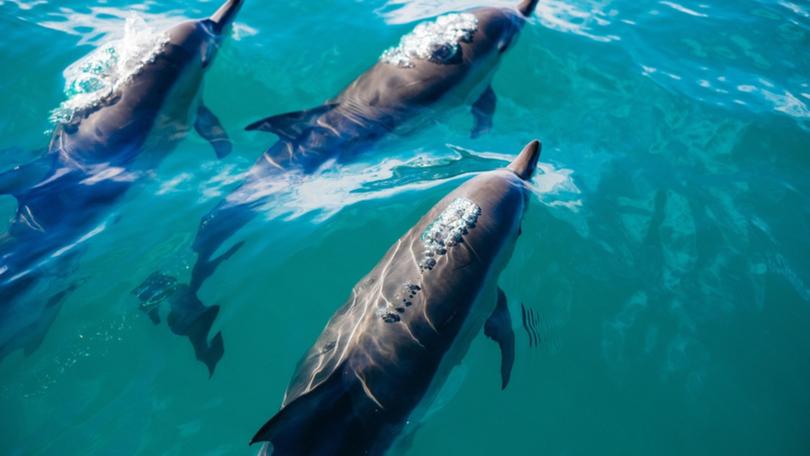
People also once believed that dolphins liked being near humans and benefited from food handouts. But the researchers have found that interactions with people can have dire consequences — including raising risks of the marine mammals ingesting inappropriate food, being exposed to spinning boat propellers and becoming entangled in fishing gear.
When the program started, no one knew whether dolphins generally ranged widely or stayed local — key information for wildlife managers.
Using radio tracking devices and other tools, the researchers found that the roughly 170 dolphins that live in Sarasota Bay are organised in a definable range that is their home for life.
Generation after generation also stay in the same area and raise families. One 67-year-old female has given birth in a particular neighbourhood at least 12 times, the program says. Before the study began, scientists had no idea bottlenose dolphins could live into their 60s in the wild.
A dolphin’s day
A day in the life of a Sarasota Bay dolphin is one of constant motion in which they feed on a variety of fish, travel, socialise with others and, finally, rest.
Program scientists have observed the dolphins moving fluidly in and out of groups, depending on whom they encounter.
Nurseries made up of mothers and their youngest calves will swim together for a while, and independent juveniles join up with each other to practice skills needed later in life.
During these activities, the dolphins are seeking prey while also keeping an eye out for predatory sharks and boat traffic as well as other disruptive human activities.
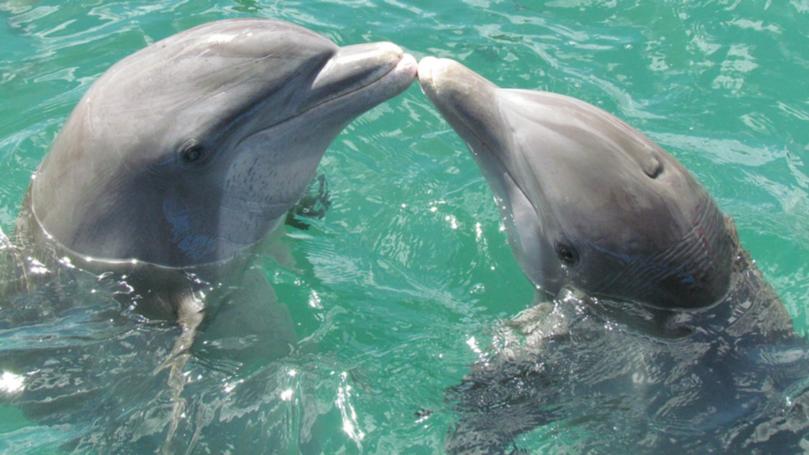
Sarasota Bay dolphins dine on a wide variety of fish, the data shows. They use their superb hearing to target prey fish such as toadfish and sea trout, which produce sounds.
Wells said that over the years, the team consistently documented pairs of the same males surfacing together, in a sort of buddy system that begins around the age of 10 and can last a lifetime.
The pairs — which are unusual among mammals — protect the animals from predators when they’re resting. And during mating, one dolphin often stands guard while the other spends time with a female.
When temporarily separated, the dolphins sometimes call to each other, apparently to maintain contact.
Bottlenose dolphins are very active sexually, Wells says. Both hetero- and homosexual interactions are used to create social bonds, he says, not just for procreation.
The greatest threats
The Sarasota Bay study animals are urban dolphins, living among a burgeoning human population and nearly constant exposure to boat traffic.
Fifty thousand boats are registered in the dolphins’ home range within the bay, and boats pass within 100 yards (just over 91.4m) of a dolphin an average of every six minutes during the day.
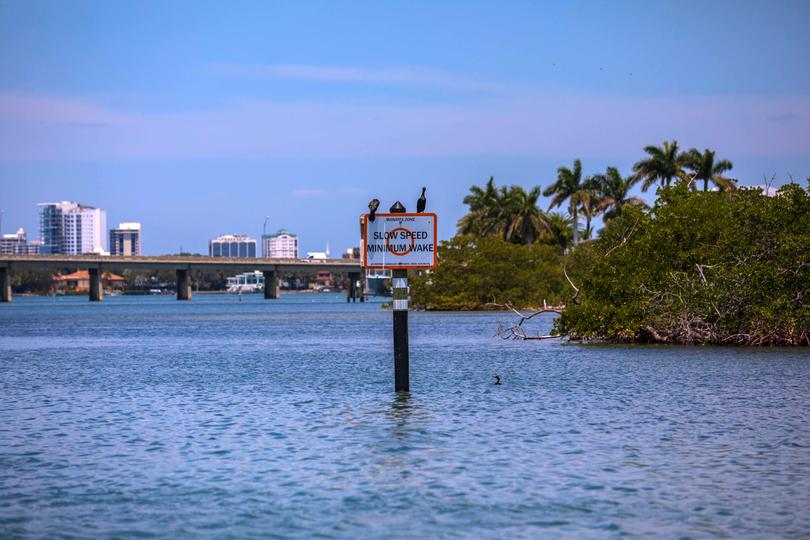
Program staff were among the first to document the threats of death and serious injury to the dolphins caused by interactions with recreational fishing.
“Interaction with fisheries is the most common cause of death,” said Gretchen Lovewell, program manager of Mote Marine Laboratory’s Stranding Investigations Program, based in Sarasota.
Lovewell works closely with Wells’s team to help fill in the dolphins’ life story, studying the animals’ skeletons to determine cause of death — and how they lived.
The bones sometimes reflect a darker side of dolphin behaviour, one that belies the smiling caricature perpetuated by sympathetic images.
The animals have powerful tails and beaks and use them against each other during conflicts. With males reaching more than nine feet (more than 2.7m) in length and weighing as much as 660 pounds (almost 300kg), such conflicts can be lethal.
Some of the bones of calves that Lovewell has examined show signs of being bashed by adult dolphins — deep teeth marks, broken bones and bruising around the babies’ jaws where adults apparently rammed them.
“Dolphins can be big, mean jerks,” Lovewell says.
Besides tangling with recreational fishing, the dolphins increasingly grapple with other threats. After recent severe outbreaks of a harmful algal bloom known as red tide, the dolphins altered their ranging and social patterns, interacting with anglers and boaters more often, with sometimes fatal results.
Dolphin encounters with sharks also rose, probably because red tide’s lethal effects on the fish that sharks normally consume caused them to prey on dolphins instead. However, researchers have documented more healed shark bite marks on paired males than single males, leading scientists to believe wounded paired dolphins survive attacks more often.
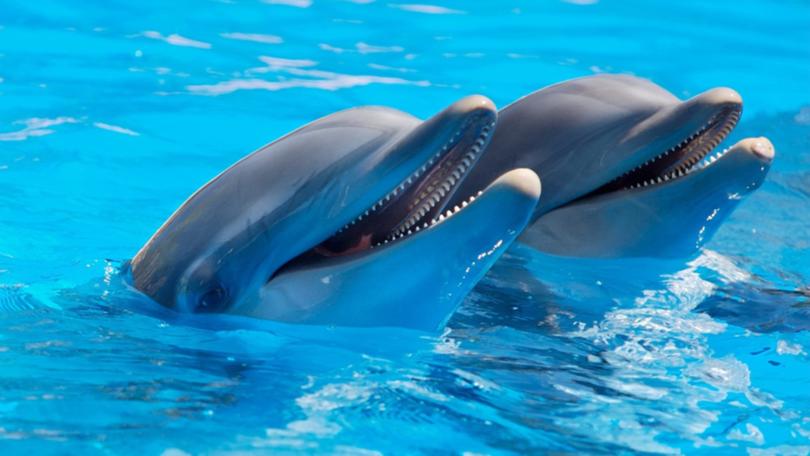
Climate change and blubber
Climate change has scientists concerned for the dolphins’ future.
The animals’ blubber thickness and lipid content go up and down in response to seasonal temperature changes, the program team has found.
“With climate change, rising water temperatures in areas where they live come close to the dolphins’ body temperature, and there’s a limit to how much blubber they can shed to adapt,” Wells said.
In some ways, dolphins can serve as canaries in a global ocean coal mine.
“Understanding dolphin health, behaviour and biology helps us conserve dolphins in the wild and better protect their populations,” said Michael Adkesson, president and CEO of the Brookfield Zoo Chicago, which oversees animal conservation projects around the world, including the Sarasota program.
“It also provides valuable information on the overall health of the oceans and marine landscapes that impact countless other species, including humans.”

Techniques developed by the team in Sarasota Bay have been used to help other scientists unravel the structure of dolphin populations and conserve them across the country and around the world, including endangered bottlenose dolphins in Greece and Mekong River dolphins in Cambodia.
Small franciscana dolphins that were dying in local fishermen’s nets in two Argentina bays were tracked in collaboration with Argentine scientists using the program’s satellite-linked transmitters, determining that the animals’ range closely matched the fishing zone. The findings have been used by the fishermen and the Argentine government to help protect the dolphins.
Data gathered by the program over the years has contributed to National Oceanic and Atmospheric Administration management plans for the species and has guided officials’ handling of environmental disasters such as the 2010 Deepwater Horizon oil spill.

The Sarasota-based method of temporarily restraining wild dolphins for health assessments was central to understanding the impact of the spill in Louisiana’s Barataria Bay, which was heavily oiled by the spill.
The dolphins were found to have significant levels of adrenal toxicity and lung disease, among other disorders related to petroleum hydrocarbon exposure and toxicity.
“The techniques and long-term data coming from Sarasota served as the baseline for the data obtained in Barataria Bay,” said Michael Moore, senior scientist at the Woods Hole Oceanographic Institution in Massachusetts.
“Teams and tools developed by the Sarasota Dolphin Research Program were deployed in the spill area and led to a whole new understanding of how these disasters impact marine mammals,” Moore added. “None of this would have happened without the tools Randy Wells and his team developed.”
Special to The Washington Post
